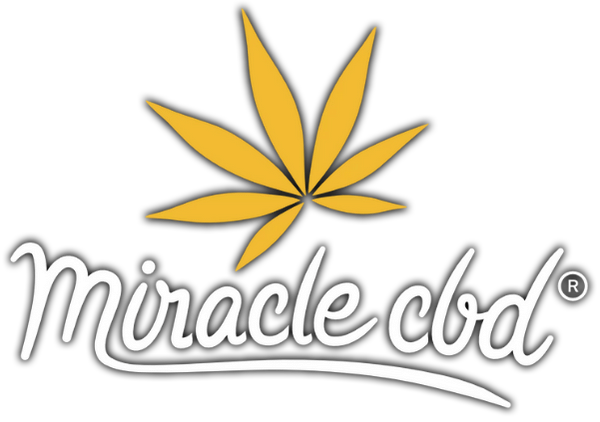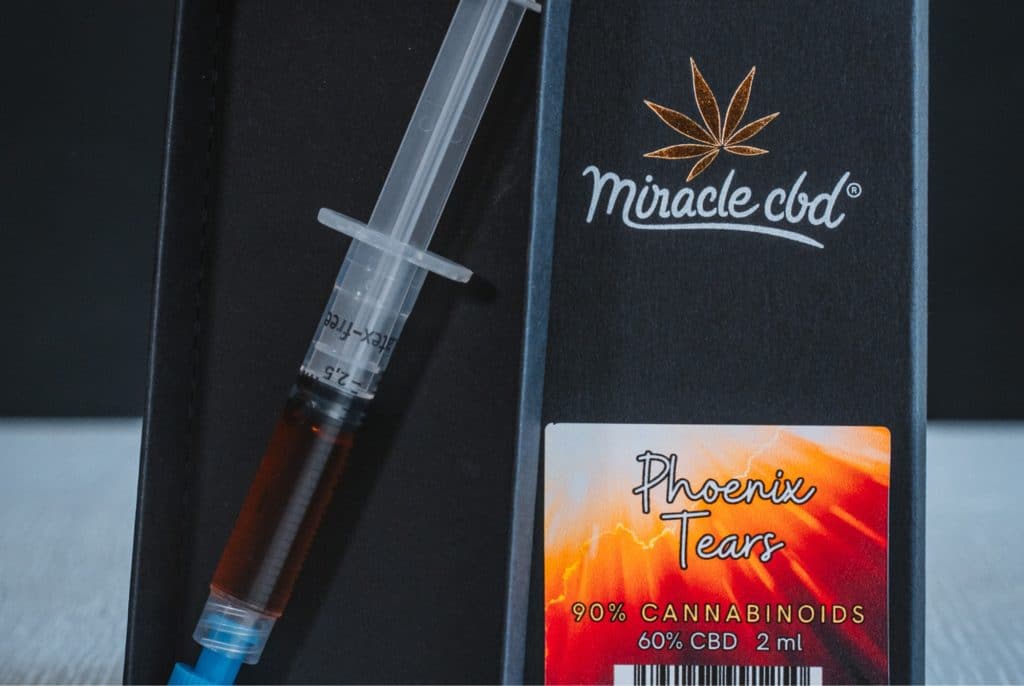The deaminated cannabinoid THC: What exactly is tetrahydrocannabinol?
Mass production of hemp was one of the dominant features of post-war Czechoslovakia. For the first republic, cannabis meant a valuable raw material for the production of fibers, clothes, wax and sugar. But why is it an illegal drug today, despite the remarkable healing effects of THC proven by many studies?
Gateway to the world of hard drugs. This is one of the common epithets used especially by people from the older generation in connection with this medicinal herb. But there is nothing to be surprised about. Many decades ago, the state apparatus included cannabis with a high THC content, aka marijuana, on the black list of narcotic substances that allegedly make people a walking disaster. It was similar in the last century, for example, in the United States. We wrote about this in article dedicated to the cannabis joint. However, as is often the case, illegality has made marijuana an attractive substance for much of society because the forbidden fruit tastes best.
But let's take an objective look at the THC of hemp (marijuana) together. What exactly is THC? And what do expert studies say about him? Is it really only used by outcasts and criminal elements?
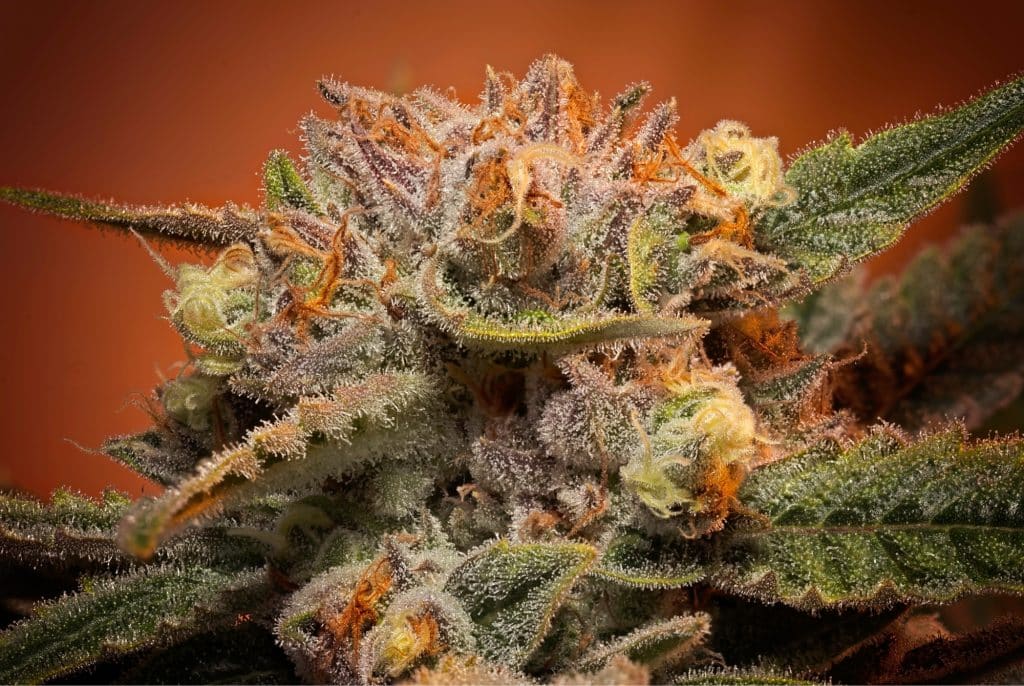
What is THC
Before we get into a deeper analysis, let's first clarify what THC actually is. The three letters THC indicate a substance that occurs naturally in the cannabis plant. We call it tetrahydrocannabinol. It belongs to the same group of elements as other known cannabinoids that have gained media attention in recent years. It is mainly about cannabidiol, better known above all under the abbreviation CBD, which can be described as one of the main medicinal components of cannabis. However, it is far from being the only therapeutic compound in cannabis. More than 100 cannabinoids have been discovered so far!
In addition to CBD, other cannabinoids, such as CBG or CBN, which can also be found in legally sold cannabis products. However, psychoactive THC, which is not only a recreational drug, but a natural resource that our ancestors have used since time immemorial, also has tremendous therapeutic potential. Cannabis ointment is by no means the only way to use the numerous positives that we tetrahydrocannabinol offers.
THC can interact with cannabinoid receptors, which are part of the ECS (endocannabinoid system). Thanks to this, it can have positive effects on improving sleep, memory, improving mood, alleviating depression or bringing desired relief from chronic pain. The therapeutic effects of THC are comparable to CBD, but with the difference that tetrahydrocannabinol is a psychoactive substance, whereas cannabidiol (CBD) has a purely relaxing effect on the body without intoxicating.
For enthusiastic cannabis users, this is a small multiplier. So let's continue with the paragraph dealing with the discovery of THC, which not everyone needs to know. Here we go!
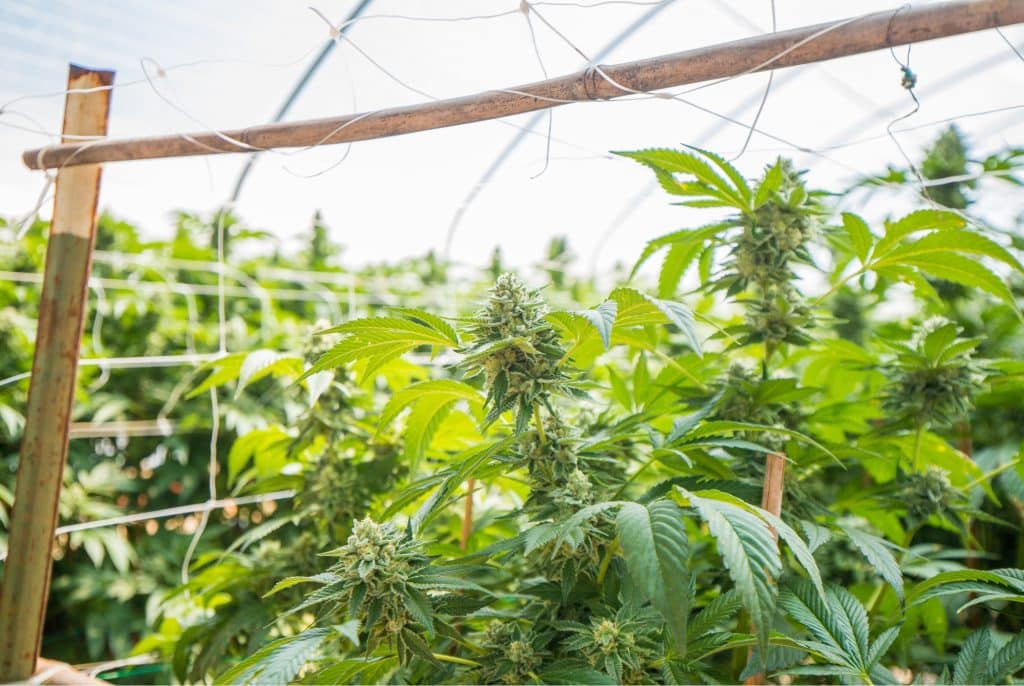
The discovery of THC
Undoubtedly, among the most important pioneers in the field of cannabis science is an Israeli professor of Jewish origin named Raphael Mechoulam. Rafi, as many nicknamed him, could be a role model for us not only for his discoveries, but above all for the enthusiasm with which he carried out his research work. He also knew how to convey enthusiasm to his students. Living proof today are the thousands of enthusiastic young scientists in whom mentor Rafi left a deep legacy that continues continuously. Unfortunately, this great master is done with his earthly work, as he left this world forever in March 2023 at the age of 92. Honor his memory.
As you surely understood, it was this exceptional person who was (and not only) behind the discovery of THC. Together with Roger Adams, who was instrumental in discovering and isolating the pure CBD a HHC, we can include him in the imaginary hall of fame of scientific giants who dedicated most of their lives to the successful research of cannabis. Let's therefore say something about Raphael and his life's journey.
Biography of Raphael Mechoulam
This extraordinary person was born in 1930 in the capital of Bulgaria, Sofia, into a wealthy Jewish family. However, the Second World War was not long in coming. Her arrival in the Balkans meant radical changes for Mechoulam's family. During these times, young Raphael initially studied in an experimental program for exceptionally talented children who excelled in chemistry. But that was to change before long, because in 1944 he received a call-up order to the army. He was therefore transferred from the research institute to the military chemical engineering course. Raphael certainly did not welcome this change with joy.
After the end of the war, the whole family emigrated to the newly established state of Israel, where they began to do much better. For Rafi, this marked a career shift to practical chemistry, which he was very attracted to. Here he focused on the development of insecticides for the Israeli army.
One of the key moments of the young talented scientist was the successful completion of his studies at the Hebrew University in Jerusalem, where he managed to obtain a university degree in chemistry in 1952. Initially, he was involved in the chemistry of steroids, but later he received a doctorate and an associated fellowship in New York. After returning from the United States, he worked between 1960 and 1965 in Israel's Rehovot, specifically at the Weizmann Institute, where he first began to deal with hemp cannabinoids. At the age of 45, he became a university professor and 4 years later even the rector of the Hebrew University, where he later took refuge again.
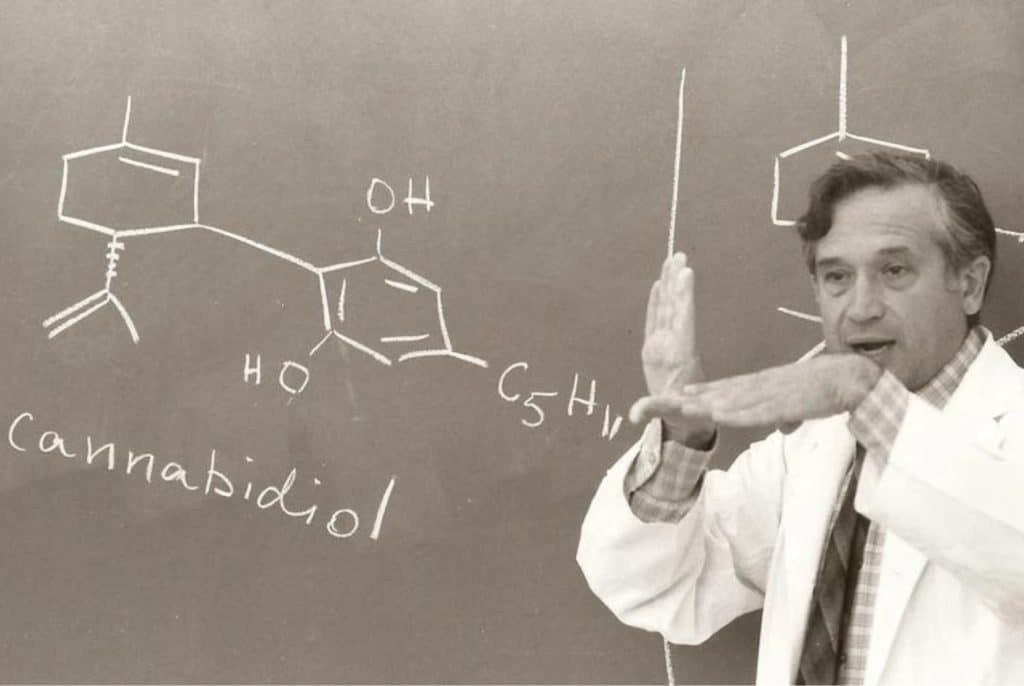
THC Effects: The Theory Was Right, But The Evidence Was Missing!
The most famous achievement of Mechoulam's career is undoubtedly the discovery of THC. However, it should be added that at the time when Rafi started researching cannabinoids from hemp, tetrahydrocannabinol (THC) was already very well known to scientists. And even under the same name! So how is it possible that it is Rafim who is credited with the discovery of the most famous psychoactive compound, even though his contemporaries were well aware of the chemical formula and psychoactive effects of THC, which have been proven by many studies?!
Most likely, you have noticed that as soon as we come across the issue of cannabis research and history, we usually always come across the same person, whom we also named today. Yes, it is the great Roger Adams himself who actually first discovered the cannabinoid THC and its psychoactivity. The problem was, however, that he could not extract it directly from the hemp plant, as he was working with Cannabis sativa strains with a not very high content of this psychoactive active substance. In the case of Roger Adams, the main yield of cannabis plants was mainly CBD, with which he continued to experiment and thanks to hydrogenation, for example, he managed to obtain isolated HHC (hexahydrocannabinol).
Although he was the first to express the hypothesis regarding the cannabinoid THC as the cause of the psychoactive effect of the cannabis plant on the organism, he did not have the appropriate evidence for the scientific community, as he was unable to extract THC directly from the plant.
A bun with THC confirmed preconceived notions
In academia, this theory was only accepted when Rafi Mechoulam came along with clear scientific evidence that once and for all underlined the psychoactive effects of THC. After an initial test on monkeys that showed sedative intoxication, the researcher decided on a somewhat unconventional and somewhat controversial solution. He organized a party for his friends from the area, for the occasion of which his wife Dalia baked a special bun with cannabis extract. Rafi chose half of the guests who had no experience with cannabis at all and offered them a bun with a small dose of THC. It didn't take long and magical food with tetrahydrocannabinol began to work, thus clearly confirming the supposed theory about the psychoactivity of the cannabinoid THC.
In the course of researching cannabis, Rafi arrived at his most famous statement: “Cannabis is a plant of a thousand and one molecules.” With each new cannabinoid discovered, this hypothesis began to take on a very real shape. To date, more than 100 active substances contained in cannabis flowers are known!
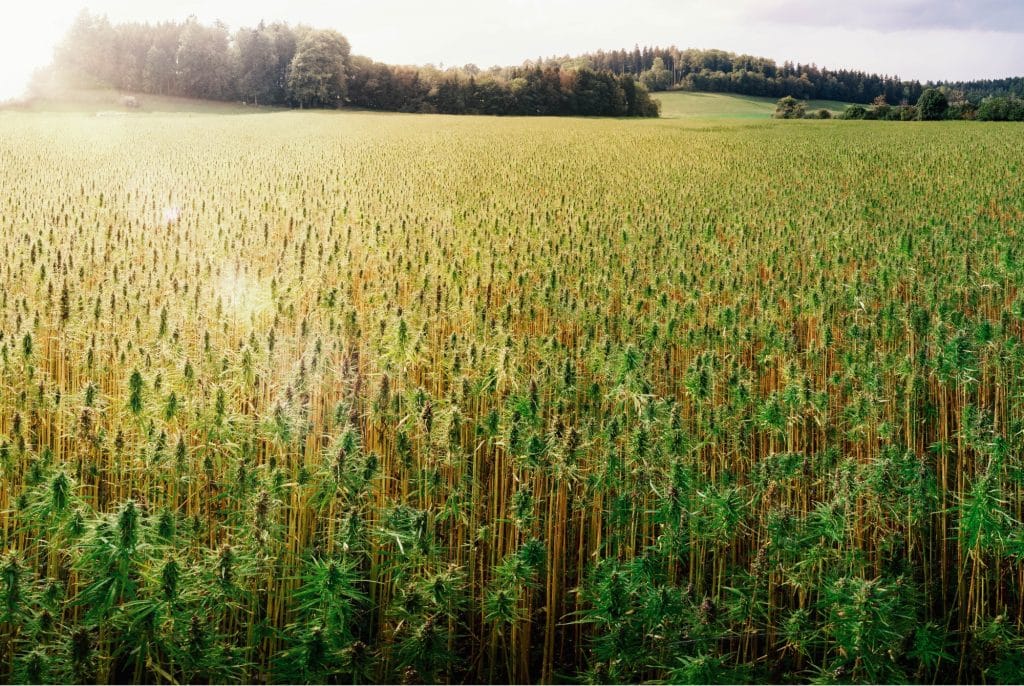
Effects of THC
Tetrahydrocannabinol interacts with cannabinoid receptors, which are part of the endocannabinoid system (ECS), whose function we describe in the article CBD and ECS. These receptors are found throughout the body, including the nervous system. The psychoactive effect caused by the interaction with endocannabinoid receptors can last for several hours, while THC usually stays in the body for several tens of hours, depending on the amount of the administered dose and the frequency of use. Tetrahydrocannabinol is therefore detectable by a drug test for several days. If we go even deeper, we find that tetrahydrocannabinol can only be found in the hair follicles after 90 days.
It is precisely the psychoactive effects of tetrahydrocannabinol that excite many people. However, they are also the reason why THC is illegal in many countries. However, it must be added that not all people are comfortable with the psychoactivity of THC. For all those who want to enjoy the therapeutic effects of cannabis to the maximum, here are legal natural products that contain only non-narcotic cannabinoids. The most interesting of these are cannabidiol CBD and cannabigerol CBG, which has a purely relaxing effect on our organism. However, sensory perception is not fooled.
The strongest forms of cannabis and other alternatives
If you have viewed our offer CBD & HHC shop, you must have registered that for the vast majority of products we state that it is a broad-spectrum hemp product. This means that it contains all the important cannabinoids that are necessary to achieve the optimal effect, which we call the "entourage effect". The THC content in these products is of course within the legal standard, i.e. less than 1%. This condition is also the reason why marijuana is stronger when it contains a high percentage of both THC and CBD. The THC:CBD mix in a 1:1 ratio is considered to be the strongest combination ever.
The fact that cannabinoids work best when they are together is confirmed, for example, by our pampered HHC flowers ULTIMATE, which contain 30% HHC, but also more than 20% CBD! These HHC flowers they are legal thanks to their low THC content, although their effects can be even stronger than illegal tetrahydrocannabinol! It also appears as an interesting alternative H4CBD products whose effects are often compared to products with a THC:CBD ratio of 2:1.
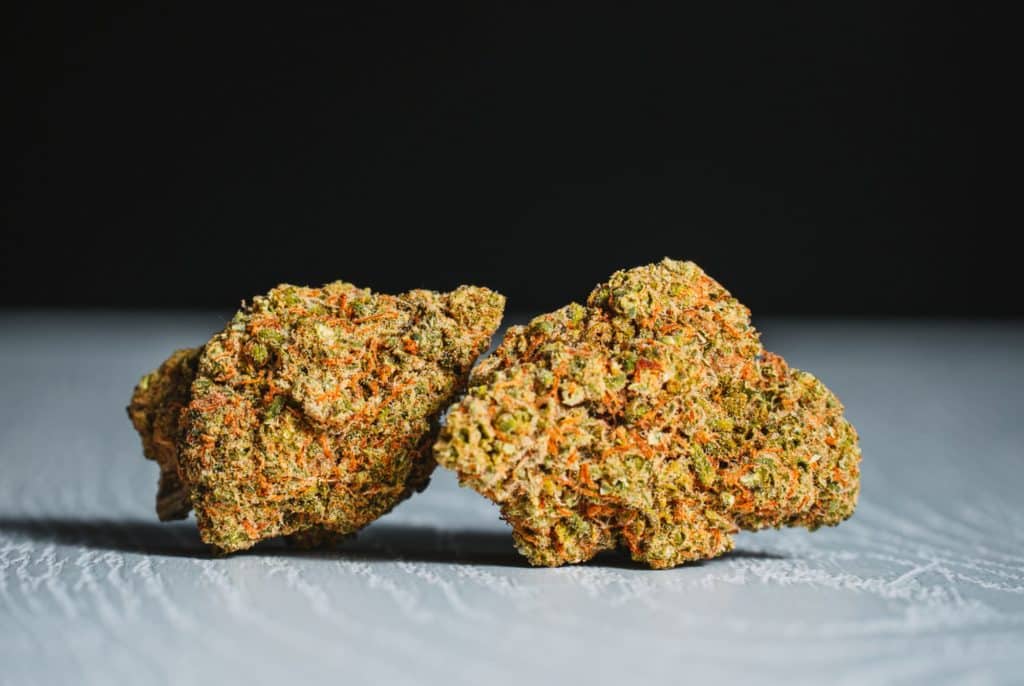
Ways to use THC
Basically, it does not matter how tetrahydrocannabinol is applied. Speaking of ways of consumption, we can list the most common of them.
- By far the most widespread way of using THC is smoking dried flowers marijuana, which is ground up and wrapped in paper or a tube. The effects occur within the next few minutes.
- It is a more modern and at the same time healthier method vaporization of cannabinoids. In this way, water vapor is inhaled without the harmful substances that are produced during combustion. At the same time, it is possible to make the experience more pleasant with fruity aromas. That's why it is HHC pen a real hit. The effects of cannabis distillate are almost immediate.
- Cannabinoids can also be used oral form. In this category we can include drops and oils (THC oil), capsules, sprays, but also various edibles with hemp extract. In the case of snacks, the effect occurs more slowly, as it has to reach the circulatory system through the digestive system. However, it can take much longer than in the case of vaporizing or smoking cannabis and marijuana.
- Application to the skin: Tetrahydrocannabinol can be mixed into ointments, balms, tinctures or bath salts that come into direct contact with the skin when applied. In this case, you will most likely not feel the psychoactive effect, because it acts only locally. But it is a great way to reduce unpleasant pain or reduce the occurrence of inflammation. For example, Rick Simpson thanks Phoenix tears he was able to get rid of cancer! (Learn more)
Therapeutic effects of THC
Our great-grandmothers already knew about the medicinal power of cannabis, and they were not allowed to use medicinal herbs. Cannabis was, of course, a must-have in the herbarium of every good herbalist. However, the dynamic development of technology and the associated production and distribution of pharmaceutical preparations have pushed back the use of Mother Nature's gifts. Fortunately, we get back to what has been most natural to human beings since time immemorial. So what exactly can THC help us with?
- reducing anxiety and depression
- prevention of inflammation and their treatment
- sleep problems
- pain relief
- stomach upset
- problems with anorexia
- reduction of migraine incidence
- significant help with the side effects of chemotherapy
- help in the treatment of post-traumatic stress disorder
- reducing the occurrence of seizures
- activation of metabolism at weight loss
- alleviation of symptoms associated with HIV/AIDS
- an alternative to combat opiate addiction
- help in the treatment of glaucoma
- treatment of diseases of the digestive tract
- effective help in multiple sclerosis
As you can see, the possible beneficial benefits of using THC are really wide. Tetrahydrocannabinol has been subjected to countless scientific tests in laboratories over the past decades, which has revealed many more benefits than we originally attributed to cannabis. This is the main reason why our motto is a slogan Miracle cannabis.
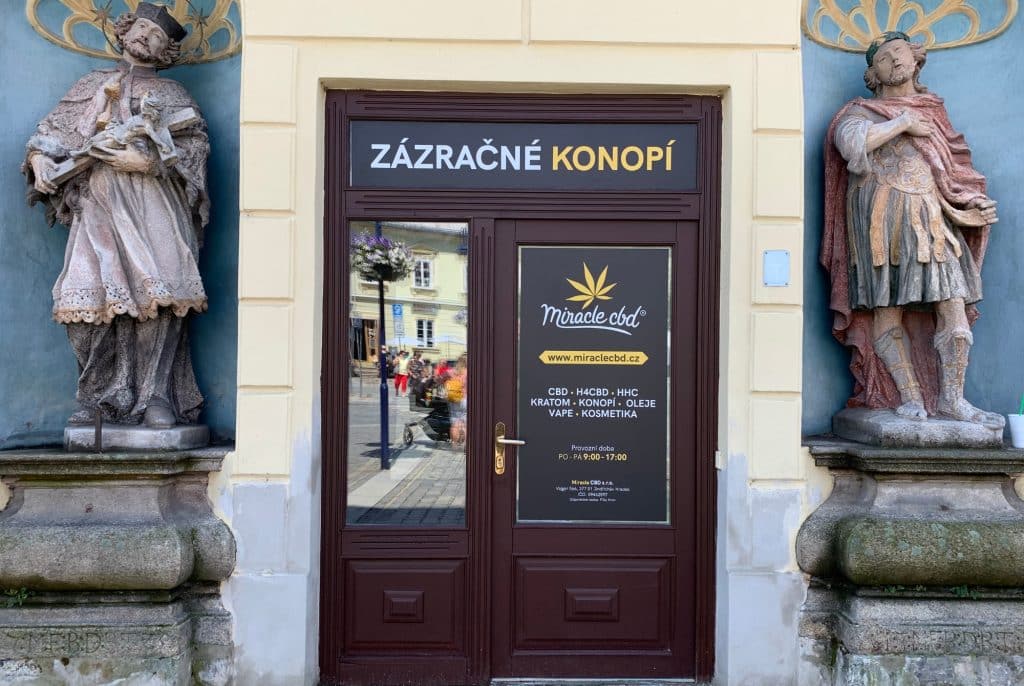
Addiction to THC can be broken with CBD!
Many avid users of high-THC marijuana probably think that tetrahydrocannabinol is not addictive. However, the opposite is true, although withdrawal symptoms on a physical level are definitely not comparable to hard drugs. However, the biggest problem with cannabis with a high THC content is psychological dependence, which can manifest itself in excessive and long-term use of the substance with anxiety, depression, sleep problems, mood swings and, in extreme cases, aggressive behavior. However, the symptoms of the missing substance do not necessarily manifest themselves only in lack of sleep and impaired concentration, but can also be reflected in physical discomfort. One of them is, for example, hand tremors, dizziness, night sweats or convulsions muscle pain.
Tetrahydrocannabinol aka THC is stored in adipose tissue when used in the long term. During abstinence, it gradually starts to wash out. As the limit of tetrahydrocannabinol in fat tissue decreases, physical and mental conditions improve, which will make the next phase of withdrawal much easier for you. However, after several years of regular use, the initial unpleasantness can last quite a long time and it takes a really strong will to stop smoking cannabis joints once and for all.
Bottom line, if you decide to use THC in any form, then it should be solely for health reasons, for which your body will certainly thank you. Abuse of marijuana for recreational purposes can lead to the above-mentioned negative effects after a certain period of time. However, a great alternative can be CBD, which, although it does not have psychoactive effects, can effectively help with withdrawal bark. In the same way, it is much more suitable for all individuals who have not yet been kissed by cannabis, but who want to use its therapeutic potential to the maximum. CBD is available on the Czech market in many different forms from oils and drops, through flowers and food, to vape pens and cannabis cosmetics. So you can really choose everyone.

(CBD) cannabis and legislation
Regulates the free sale and distribution of cannabis Law no. 167/1998 Coll., on addictive substances, which was amended in 2022. Thanks to this, the upper limit of THC in hemp products has been moved to 1% content by weight. However, there is a catch. Neither the seller nor any other distributor may encourage its customers to use any form of these products. That's why we also don't sell CBD & HHC products, Hence kratom, for direct consumption, inhalation or smoking. However, the end customer does not have to worry about persecution by the state authorities in any case. Definitely not if it is a product from a verified cannabis supplier.
If you would like to grow your own CBD hemp with less than 1% THC content, you can do so without any permission. That is, if the area of your hemp field does not exceed 100 m2. If you decide to have your own hemp farm, you must report your intention to the appropriate department of the Czech Customs Administration. It is also definitely not out of the question to inform the police to avoid any inconvenience.
Do you need help?
If anything is not clear to you and/or you want advice on the selection, please write to us below in the comments below the post, or you can contact us by e-mail info@miralecbd.cz. Thank you!
DISCLAIMER: Cannabis and kratom products are for collector, industrial and technical use only. Alternatively for further sale and processing. In no case are they intended for consumption, inhalation or smoking! The described effects are purely informative. Company Miracle CBD does not approve or otherwise support the abuse and sale of psychotropic and narcotic substances!
